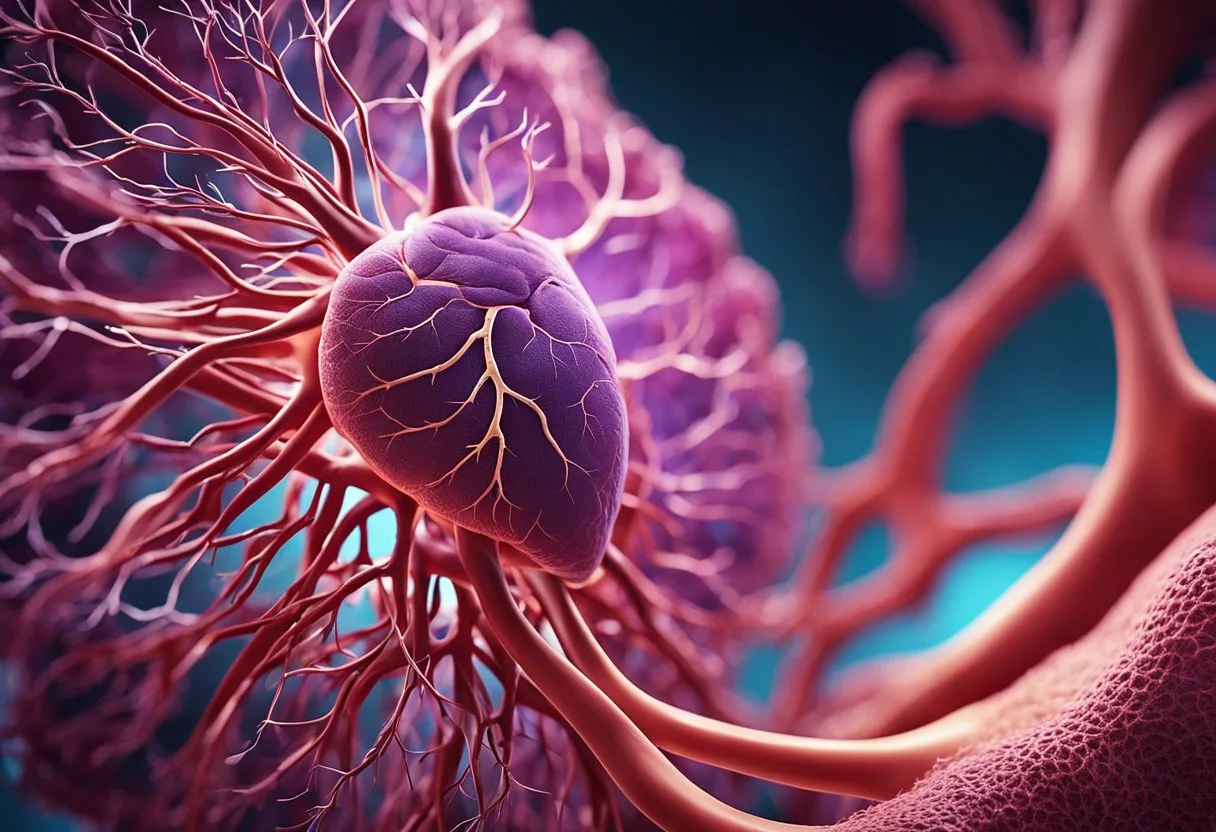Regular exercise is essential for maintaining overall health and well-being. Exercise has been shown to have numerous physical and mental health benefits, including reducing the risk of chronic diseases such as obesity, diabetes, and heart disease. However, many people are unsure about how much exercise they need to do to reap these benefits.

Research has shown that exercising every day can have significant benefits for the body. According to the Mayo Clinic, regular physical activity can improve muscle strength, boost endurance, and help the cardiovascular system work more efficiently. Additionally, exercise can help with weight management, reduce the risk of chronic diseases, and improve mental health. However, it’s important to note that the type and intensity of exercise can vary depending on individual needs and goals.
Physiological Benefits of Daily Exercise

Regular physical activity provides numerous benefits to the body, including improved heart health and blood flow, muscle and strength development, endurance and energy levels, and weight management.
Heart Health and Blood Flow
Daily exercise can improve cardiovascular health by reducing blood pressure and cholesterol levels. Exercise also helps to improve blood flow and circulation, which can reduce the risk of heart disease and other cardiovascular conditions.
Muscle and Strength Development
Daily exercise helps to develop and strengthen muscles throughout the body. Resistance training, such as weightlifting, can help to increase muscle mass and improve core strength. This can help to improve overall physical health and reduce the risk of injury.
Endurance and Energy Levels
Daily exercise can also improve endurance and energy levels by increasing metabolic rate and calorie burn. This can help to reduce the risk of obesity and metabolic syndrome, as well as improve overall physical fitness and energy levels.
Weight Management
Daily exercise can also help with weight management by burning calories and reducing body fat. This can help to improve overall physical health and reduce the risk of obesity and related health conditions.
Overall, daily exercise provides numerous physiological benefits that can improve physical health and reduce the risk of chronic diseases. By incorporating regular physical activity into their daily routine, individuals can improve their overall health and well-being.
Mental and Emotional Effects

Regular exercise has numerous mental and emotional health benefits. Here are some of the ways in which exercise can positively impact mood, cognitive function, brain health, and mental health.
Mood and Stress Regulation
happiness
Exercise is a natural mood booster and stress reliever. It releases endorphins, which are natural chemicals that promote feelings of happiness and relaxation. Endorphins also act as natural painkillers and can help alleviate symptoms of depression and anxiety. Exercise can also help reduce the levels of the stress hormone cortisol, which can have a negative impact on mental health when levels are chronically elevated.
Cognitive Function and Brain Health
Exercise has been shown to improve cognitive function and brain health. It promotes the growth of new neurons in key areas of the brain, including the hippocampus, which is involved in memory and learning. Regular exercise can also help prevent age-related decline in cognitive function and reduce the risk of dementia.
Mental Health Improvements
Exercise can be an effective antidepressant and can help alleviate symptoms of depression and anxiety. It has been shown to improve self-esteem, reduce symptoms of social anxiety, and improve overall mental health. Additionally, exercise can be a healthy coping mechanism for dealing with stress and negative emotions.
In summary, regular exercise has numerous mental and emotional health benefits. It can be a natural mood booster, stress reliever, and antidepressant. It can also improve cognitive function, brain health, and overall mental health.
Recovery and Rest

Regular exercise is essential for maintaining physical and mental health. However, it is equally important to allow the body to recover and rest. This section will discuss the importance of sleep and rest days, as well as injury prevention and muscle recovery.
Importance of Sleep and Rest Days
Sleep and rest days are crucial for allowing the body to recover from exercise. During sleep, the body repairs and regenerates tissues, including muscles that have been stressed during exercise. It is recommended that adults get 7-9 hours of quality sleep per night to promote optimal health and well-being.
In addition to sleep, rest days are also important for recovery. Rest days allow the body to repair and rebuild muscles that have been broken down during exercise. It is recommended that individuals engage in active recovery on rest days, such as light stretching or low-impact activities, to help maintain mobility and flexibility.
Injury Prevention and Muscle Recovery
Rest and recovery are also important for injury prevention and muscle recovery. Overuse injuries can occur when individuals do not allow their bodies enough time to recover between workouts. Rest days and adequate sleep can help prevent these injuries by allowing the body to repair and rebuild muscles.
Stretching, warming up, and cooling down are also important for injury prevention and muscle recovery. Stretching before and after exercise can help prevent muscle soreness and improve flexibility. Warming up before exercise can help increase blood flow to the muscles and prepare them for activity. Cooling down after exercise can help reduce muscle soreness and prevent injury.
In conclusion, rest and recovery are essential components of any exercise routine. Adequate sleep, rest days, and injury prevention techniques such as stretching, warming up, and cooling down can help individuals maintain optimal physical and mental health.
Lifestyle and Daily Habits
Nutrition and Hydration
Eating a balanced diet and staying hydrated are essential components of a healthy lifestyle, especially for those who exercise regularly. Carbohydrates are an important source of energy for the body, and it is recommended to consume them before and after exercise to help fuel and replenish the body. Additionally, drinking enough water throughout the day is crucial to stay hydrated and support bodily functions.
Routine and Consistency
Establishing a consistent fitness routine can help individuals stay motivated and achieve their fitness goals. Setting achievable goals and gradually increasing the intensity and duration of exercise can help maintain progress and prevent injury. It is also important to balance exercise with other aspects of life, such as work, family, and hobbies, to avoid burnout and maintain overall well-being.
Balancing Exercise with Life
Staying active throughout the day, even outside of formal exercise, can help maintain overall health and productivity. Incorporating movement into daily routines, such as taking the stairs instead of the elevator or going for a walk during lunch breaks, can help increase physical activity levels. Effective time management and prioritization can also help individuals balance exercise with other responsibilities and maintain a healthy lifestyle.
Overall, incorporating regular exercise into daily routines can have numerous benefits for physical and mental health. By establishing healthy habits and maintaining consistency, individuals can achieve their fitness goals and improve overall well-being.
Physical Adaptations to Exercise

Regular exercise has numerous physical benefits, including improvements in musculoskeletal and cardiorespiratory systems. These improvements occur due to the body’s ability to adapt to the increased demands placed on it during exercise.
Musculoskeletal Improvements
Through regular exercise, muscles become stronger and more efficient. This improvement in muscle strength and endurance is due to an increase in muscle fiber size and number, as well as improved neuromuscular coordination. Additionally, exercise can increase bone density, which can help prevent osteoporosis and reduce the risk of fractures.
Exercise can also have positive effects on joints, tendons, and ligaments. Regular physical activity can help reduce joint pain and stiffness, as well as improve joint flexibility and range of motion. Furthermore, exercise can help strengthen tendons and ligaments, which can help prevent injuries.
Cardiorespiratory Enhancements
Aerobic activity, such as running, swimming, or cycling, can have a significant impact on cardiorespiratory fitness. Regular aerobic exercise can improve lung function and increase the body’s ability to deliver oxygen to working muscles. This improvement in oxygen delivery can result in increased endurance and reduced fatigue during physical activity.
Additionally, exercise can lead to a decrease in resting heart rate, indicating an improvement in overall cardiovascular health. This decrease in resting heart rate is due to the heart becoming more efficient at pumping blood, which can reduce the risk of heart disease.
In conclusion, regular exercise can lead to significant physical adaptations and improvements in overall physical fitness. These adaptations include improvements in muscle strength and endurance, joint flexibility and range of motion, bone density, lung function, and cardiovascular health.
Health Conditions and Disease Prevention

Impact on Chronic Diseases
Regular exercise can have a significant impact on the prevention and management of chronic diseases. According to the American Heart Association, physical activity can reduce the risk of developing heart disease, stroke, and high blood pressure. It can also improve cholesterol levels and help maintain a healthy weight, which are all factors that can contribute to heart health.
In addition to heart health, regular exercise can also help prevent the onset of type 2 diabetes. Exercise can improve insulin sensitivity, which can help regulate blood sugar levels. This can be especially important for individuals who are at risk of developing diabetes due to family history or lifestyle factors.
Cancer prevention is another potential benefit of regular exercise. According to the National Cancer Institute, physical activity can reduce the risk of developing several types of cancer, including breast, colon, and lung cancer. Exercise can also be beneficial for individuals who are undergoing cancer treatment, as it can help manage symptoms such as fatigue and inflammation.
Immune System and Illness Reduction
Regular exercise can also have a positive impact on the immune system and overall illness reduction. Exercise can increase the production of antibodies and white blood cells, which can help fight off infections and illnesses. Additionally, exercise can help reduce inflammation in the body, which can be a contributing factor to the development of chronic diseases.
While exercise can be beneficial for overall health, it is important to note that it should not be used as a substitute for medical treatment. Individuals with chronic conditions should consult with their healthcare provider before starting a new exercise routine. Additionally, individuals should aim to incorporate a variety of physical activities into their routine, including aerobic exercise and strength training, to maximize the health benefits.
Social and Community Aspects

Regular exercise not only benefits physical health but also has a positive impact on social and community aspects of life. This section will explore how exercise can improve social connections and promote public health.
Exercise and Social Connections
Exercise can be a great way to meet new people and strengthen existing relationships. Joining a gym or fitness class provides an opportunity to connect with like-minded individuals and form new friendships. Group activities such as team sports or dance classes can also foster a sense of community and belonging.
Having a personal trainer can also be beneficial for social connections. Trainers can provide support, motivation, and accountability, which can lead to a stronger bond between the trainer and the client. In addition, trainers can introduce clients to new exercises and activities, which can expand their social circle.
Promoting Public Health
Exercise not only benefits individuals but also has a positive impact on public health. Community fitness events such as charity walks or runs can bring people together and raise awareness for important health issues. These events promote physical activity and encourage individuals to take charge of their health.
Gyms and fitness centers also play an important role in community health. They provide a safe and supportive environment for individuals to exercise and improve their health. Additionally, many gyms offer classes and programs for individuals with specific health needs, such as seniors or individuals with chronic conditions.
In conclusion, exercise has a positive impact on social and community aspects of life. It can improve social connections and promote public health. Joining a gym, participating in group activities, and working with a personal trainer are all ways to improve social connections through exercise. Community fitness events and gyms also play an important role in promoting public health.
Risks and Considerations
Regular exercise provides numerous health benefits, but there are also risks and considerations to keep in mind. This section will discuss some of the potential risks associated with exercising every day and how to mitigate them.
Overtraining and Exercise Addiction
Exercising every day can lead to overtraining, which occurs when the body does not have enough time to recover between workouts. Overtraining can cause fatigue, decreased performance, and an increased risk of injury. It is essential to incorporate rest days into your exercise routine to allow your body to recover fully.
Exercise addiction is another potential risk associated with exercising every day, and it can have negative consequences on both physical and mental health. Exercise addiction is characterized by an obsession with exercise, and individuals with this condition may continue to exercise even when injured or sick. It is important to recognize the signs of exercise addiction and seek help if necessary.
Listening to Your Body
It is crucial to listen to your body when exercising every day. Pain is the body’s signal that something is wrong, and it should not be ignored. Ignoring pain can lead to overuse injuries, which can be debilitating and take a long time to heal. It is essential to pay attention to any pain or discomfort and modify your exercise routine accordingly.
Recovery is also an essential aspect of exercise, and it is necessary to allow your body time to recover after a workout. Recovery includes rest, hydration, and proper nutrition. It is important to prioritize recovery to prevent injury and maximize the benefits of exercise.
In summary, exercising every day can provide numerous health benefits, but it is essential to be aware of the potential risks and considerations. Incorporating rest days into your exercise routine, recognizing the signs of exercise addiction, listening to your body, and prioritizing recovery can help mitigate these risks and ensure a safe and effective exercise routine.
Enhancing Exercise Outcomes
Regular exercise has numerous benefits for the body and mind. To get the most out of exercise, it is important to enhance exercise outcomes by setting realistic goals, incorporating variety, and having fun.
Setting Realistic Goals
Setting achievable goals is crucial to staying motivated and making progress. Goals should be specific, measurable, and achievable. For example, a goal could be to run a 5k in three months or to do 10 push-ups without stopping.
It is important to set goals that are challenging but not impossible. Unrealistic goals can lead to frustration and disappointment, which can decrease motivation and enjoyment of exercise.
Incorporating Variety and Fun
Incorporating variety into an exercise routine can help prevent boredom and keep motivation high. Trying new activities or workouts can also challenge the body in different ways and lead to better overall fitness.
It is important to find activities that are enjoyable and fun. This can help increase motivation and make exercise feel less like a chore. Examples of fun activities include dancing, hiking, or playing a sport with friends.
Overall, enhancing exercise outcomes involves setting achievable goals, incorporating variety, and having fun. By doing so, individuals can stay motivated and make progress towards their fitness goals.